搜索结果: 1-15 共查到“天文学 black holes”相关记录77条 . 查询时间(0.092 秒)
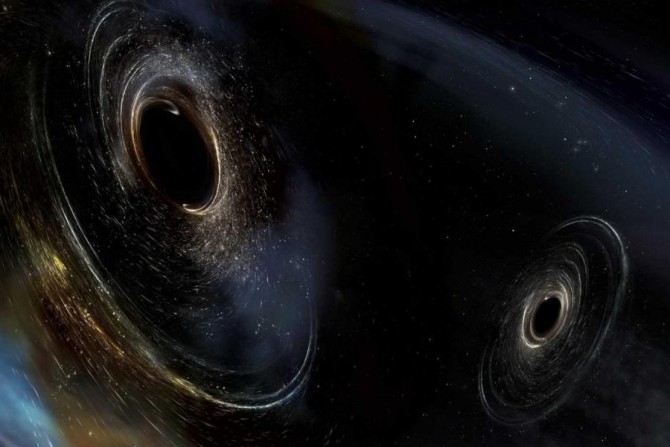
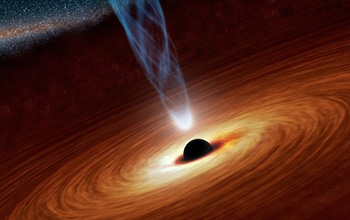
A remarkable prediction of Einstein's theory of general relativity -- the theory that connects space, time and gravity -- is that rotating black holes have enormous amounts of energy available to be t...
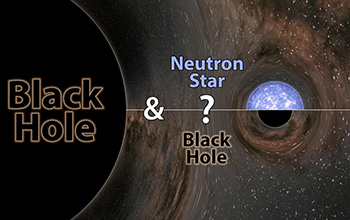
LIGO-Virgo finds mystery object in gap between neutron stars and black holes(图)
LIGO-Virgo mystery object gap between neutro holes
2020/7/3
When the most massive stars die, they collapse under their own gravity and leave behind black holes. When stars that are a bit less massive die, they explode in supernovas and leave behind dense, dead...

Supermassive Black Holes Control Star Formation In Large Galaxies(图)
Supermassive Black Holes Control Star Formation Large Galaxies
2018/1/10
Young galaxies blaze with bright new stars forming at a rapid rate, but star formation eventually shuts down as a galaxy evolves. A new study, published January 1, 2018, in Nature, shows that the mass...
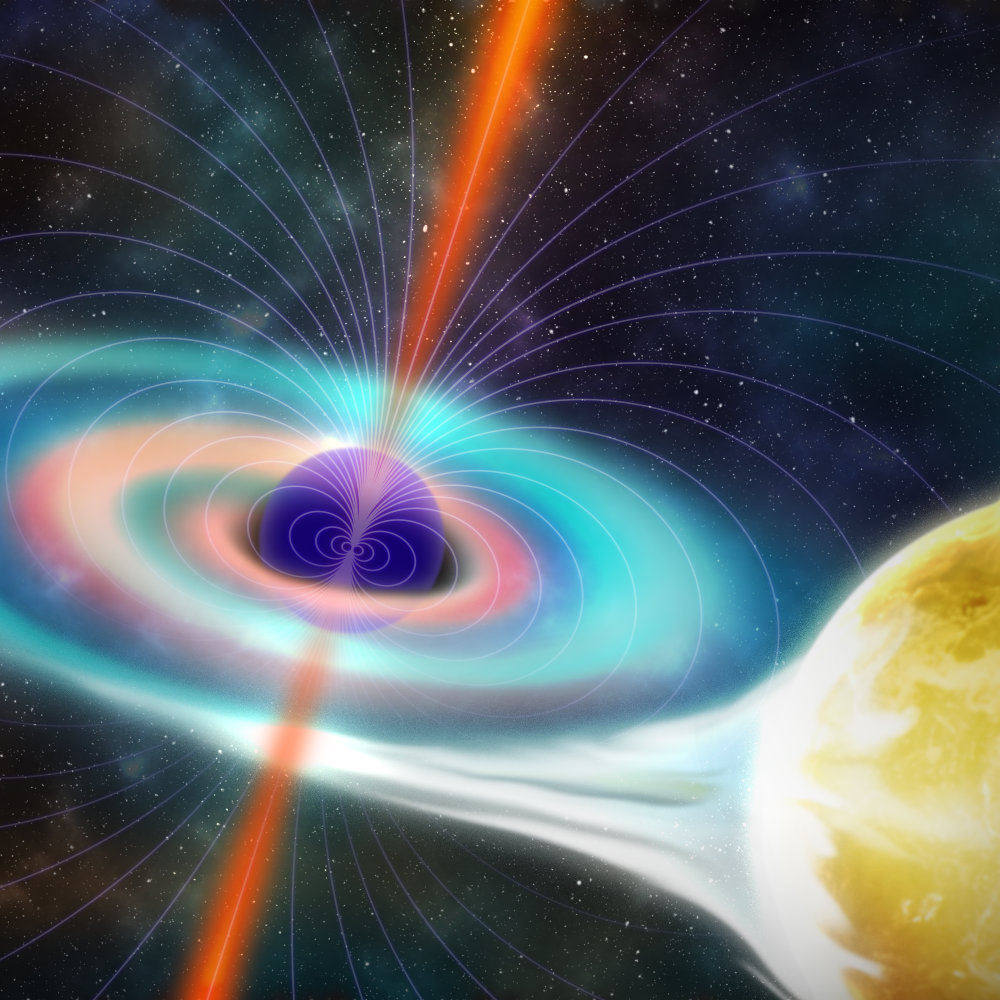
Black holes are famous for their muscle: an intense gravitational pull known to gobble up entire stars and launch streams of matter into space at almost the speed of light.It turns out the reality may...
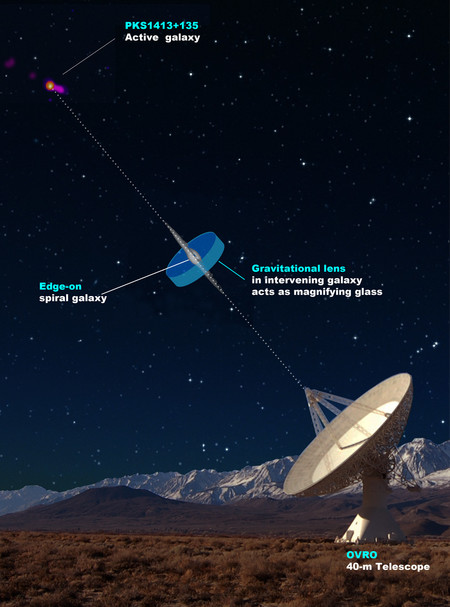
Cosmic Magnifying Lens Reveals Inner Jets of Black Holes(图)
Cosmic Magnifying Lens Inner Jets Black Holes
2017/9/5
"We have known about the existence of these clumps of material streaming along black hole jets, and that they move close to the speed of light, but not much is known about their internal structure or ...
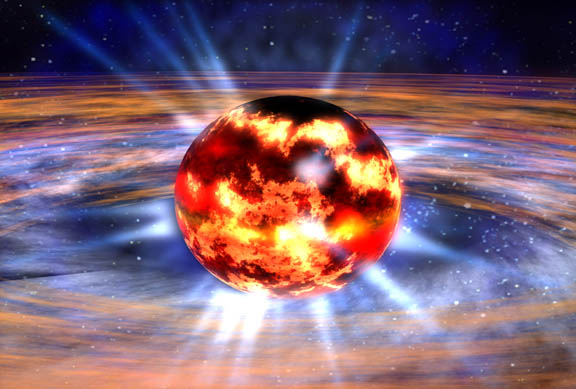
Primordial Black Holes May Have Helped to Forge Heavy Elements(图)
Primordial Black Holes Forge Heavy Elements
2017/9/4
Astronomers like to say we are the byproducts of stars, stellar furnaces that long ago fused hydrogen and helium into the elements needed for life through the process of stellar nucleosynthesis.As the...
Astronomers Detect Orbital Motion in Pair of Supermassive Black Holes
Astronomers Orbital Motion Supermassive Black Holes
2017/7/24
Using the supersharp radio “vision” of the National Science Foundation’s Very Long Baseline Array (VLBA), astronomers have made the first detection of orbital motion in a pair of supermassive black ho...
RIT study suggests dying stars give newborn black holes a swift kick
RIT study dying stars newborn black holes swift kick
2017/7/21
New information gleaned from gravitational wave observations is helping scientists understand what happens when massive stars die and transform into black holes.
Rochester Institute of Technology res...
Peering into Black Holes Using an Earth-sized Telescope
Peering Black Holes Earth-sized Telescope
2017/4/27
Turning the Earth into one giant telescope by coordinating observations from instruments arrayed around the world, teams of radio astronomers are aiming their telescopes for the next 10 days at the th...
AGN Reverberation Mapping: the pc Scale Garden of Massive Black Holes
Active Galactic Nuclei RM for cosmology
2016/7/22
Reverberation of Active Galactic Nuclei (AGNs) is delivering information of parsec scale structure of galactic nuclei from black hole accretion disks, broad line regions to the inner edge of dusty tor...
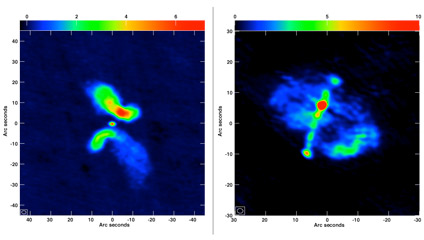
Pairs of Supermassive Black Holes in Galaxies May Be Rarer Than Previously Thought(图)
Supermassive Black Holes Galaxies Previously Thought
2015/9/25
There may be fewer pairs of supermassive black holes orbiting each other at the cores of giant galaxies than previously thought, according to a new study by astronomers who analyzed data from the Nati...

Earlier this year, astronomers discovered what appeared to be a pair of supermassive black holes circling toward a collision so powerful it would send a burst of gravitational waves surging through th...
Neutron Stars Strike Back at Black Holes in Jet Contest
Neutron Stars Strike Back Black Holes Jet Contest
2015/8/13
Some neutron stars may rival black holes in their ability to accelerate powerful jets of material to nearly the speed of light, astronomers using the Karl G. Jansky Very Large Array (VLA) have discove...
Wei-xiong Huang Explain Cosmic Mysteries-Black Holes Do Not Exist
stellar mass black holes
2015/5/28
1. Celestial body center temperature is proportional to cube root of stellar mass. 2. When stellar temperature exceeds boiling point of all elements, stellar density is inversely proportional to cube ...


